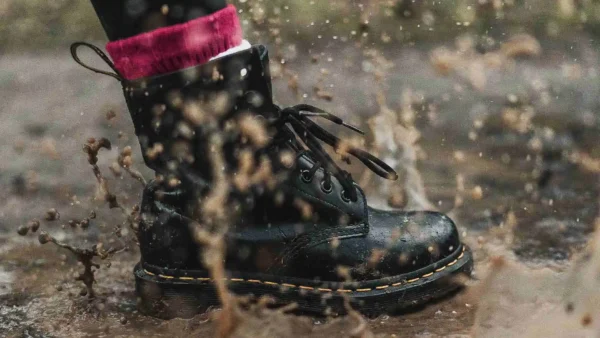Spring is a time of renewal and new beginnings. But with warming temperatures, melting snow and heavy rain, spring floods can cause significant damage to homes and other property, leaving homeowners with costly repairs and restoration. Some of the damage can be covered by insurance, but prevention is the best way to protect your home.
Spring flooding can occur due to a number of factors, but the most common is a combination of melting snow and heavy rainfall. As the snow melts, it adds to the volume of water in rivers and lakes, causing them to overflow their banks. Heavy rain can exacerbate the situation by adding even more water to already swollen waterways, and saturating the ground around your home.
Flooding on the rise in Canada
In recent years, the frequency and severity of flooding have been increasing due to changing weather patterns related to climate change. In fact the five most costly floods in Canadian history all happened between 2010 and 2020, and 20% of homes in Canada are considered at risk. In Ontario, major flooding caused by a heavy rainstorm in Toronto in 2013 led to more than $940 million in damage, the fifth costliest natural disaster in Canadian history.
What kind of damage can it cause?
Spring flooding can cause a wide range of damage to homes, including:
- Water damage to floors: Even a quarter inch of water can saturate wood floors, carpet or laminate.
- Water damage to walls and cabinets: If pressboard or drywall comes in contact with flood water, it will absorb the water and may need to be replaced.
- Contamination: Depending on where the water comes from, it can contain bacteria, viruses and other harmful substances.
- Mold: This is usually a problem after the fact. If water gets into your home and it’s not properly dried out, mold can grow.
“For water in an unfinished basement, it typically takes at least three days just to dry it out,” says Noah Firestone, owner of Firestone Restoration in Ottawa. “If it’s a finished basement and the flooring is toast, then it’s a much bigger job.”
Firestone says that restoration costs start around $2,000 for a simple dry-out of an unfinished basement and $15,000 to $20,000 in a finished basement if floors have to be replaced. From there, it depends on the extent of the damage and value of the affected items, including floors, walls, wiring, cabinets and furniture.
Homeowners usually won’t see how much area is actually wet. Usually the water has spread much further, and you can’t see it…
Noah Firestone, Firestone Restoration
What type of flooding is covered by home insurance?
Most insurance companies in Ontario now offer the following endorsements (extra coverage) that would pay for at least some spring flooding damage:
- Sewer backup: In the spring, if melting snow and rain overwhelm the sewer system in your area, it can cause your drains to back up and flood your home with contaminated water. A sewer backup endorsement covers this type of damage.
- Overland flood: This is coverage for damage resulting from water that enters through window wells and door frames, usually because a nearby body of water overflows.
- Groundwater: This endorsement covers damage that results when the ground around your home becomes saturated, and the water comes through the walls of your foundation, often through cracks.
Check with your insurance broker whether these endorsements are already part of your policy, and if not, whether they are available in your area. Homes in certain postal codes known to be prone to repeated flooding, usually because they are close to a body of water, may not be eligible.
What flooding costs are covered?
When it comes to costs related to spring flooding:
- Most homes in Ontario are covered for direct water damage to floors, walls, ceilings, cabinets, wiring, furniture and other contents, so long as the homeowner has the required endorsements (see above).
- Insurance also pays to have all affected areas thoroughly dried out.
- Insurance does not cover preventive maintenance, so it won’t pay for the installation of backflow valves, sump pumps, repairs to your foundation or your drainage (see below).
- Home insurance also doesn’t cover mold removal because it is something that builds up over time when moisture problems are not addressed.
Navigating repairs and coverage after a flood
When water gets into your home, you may not be able to determine the extent of the problem without help from a professional.
“Homeowners usually won’t see how much area is actually wet,” says Firestone. “Usually the water has spread much further, and you can’t see it without moisture meters.”
In some cases, you may also encounter disagreements with your insurance company as to how much cleanup is needed and whether some items need to be replaced, especially when it comes to damage from category 3 (or highly contaminated) water. There are international standards set by the Institute of Inspection Cleaning and Restoration Certification (IICRC) for how to handle this kind of cleanup.
“We help the homeowner through it,” says Firestone. “To support a claim, I can show the adjuster infrared pictures of where it was wet, and quote the IICRC, where it says that if it’s category 3 water, it should be removed.”
Even if the water is not contaminated, certain items like laminate flooring, furniture and cabinets made of particle board can be permanently deformed by water damage. This will usually be resolved between you and your adjuster. Your broker can help.
“To understand your coverage, sometimes your broker is your best friend,” says Firestone. “They don’t have a vested interest in whether it’s covered or not covered. They can walk you through it and make sure you’re treated fairly.”
How can I protect my home against flooding?
Here are a few things you can do to reduce the risk of water damage to your home and possessions:
- Install a backflow or backwater valve[1]: This will prevent sewage from the city’s main sewer line from backing up into your home. (Don’t use a backwater valve if you’re on a septic system.) The cost can range from $1,000 to $2,500, but there may be a program in your municipality to help defray the costs.
- Install a sump pump: This is a pump that turns on when water accumulates around your foundation. It pumps the water safely away from your home. The cost can range from $1,000 to $3,000 but again there are subsidy programs that can cover half the cost or more.
- Seal your foundation: There are a number of ways to do this, including DIY methods like waterproof paint. If you’ve had a groundwater claim, your insurer will likely expect that it’s completed by a professional.
- Protect your belongings: Anything that you store in the basement should be kept in plastic bins or raised at least an inch and a half off the floor.
- Go for a stroll in the rain: “Take a little walk around the outside of your home every so often,” says Firestone. “Make sure water isn’t pooling up beside your house and that there’s never any water accumulating in your window wells. If it is, you have a drainage problem that needs to be taken care of.”
- Take action to prevent further damage: As soon as you notice water coming into your home, call your broker or insurer and then do whatever you can safely do to mitigate damage: “An hour or two can make a big difference. If you happen to have a shop vac, start vacuuming up the water to stop the spread to other areas.”
Firestone also recommends running a dehumidifier in the basement all the time.
“Finished basement, unfinished basement, even if there’s a little seepage that won’t cause major damage, there’s always some humidity, and the more humidity, the more likely you’ll get mold.”
Getting coverage after a flood claim
If you’ve already had a groundwater claim, your home insurer may ask for proof that you’ve fixed your foundation before your next renewal. This can be as simple as filling a crack, or in extreme cases you may need to dig around the perimeter of the foundation and seal it from the outside. Costs vary from $1,500 to $15,000 and won’t be covered by insurance. Likewise, if you have a sewer backup claim and don’t already have a backflow valve and sump pump, you will need to have these issues properly addressed, or you could find it a challenge to get home insurance in the future.
Get covered for water damage and other risks
Mitch Insurance works with some of the top home insurers in Ontario. Talk to one of our home insurance specialists today to make sure you have the best coverage available for water damage. We can get you dozens of quotes and explain the coverages to you, and we’ll be there for you later if something happens. Give us a shout.
[1] Note that the Ontario building code now requires all new homes to be built with backflow valves and sump pumps.
Looking for home insurance?
Speak with a Mitch Insurance broker today to get a quote on Ontario home insurance. Learn more >
Call now
1-800-731-2228







